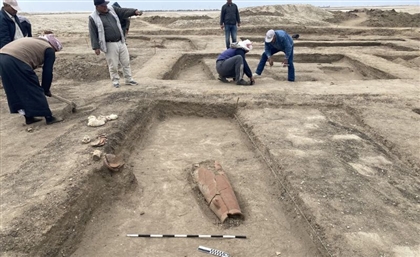16 Pyramids in Ancient Burial Site Uncovered By British Museum Team In Sudan
In an unprecedented find, a huge number of pyramids and and tombs belonging to the ancient Kush kingdom have been discovered.

A team from the British Museum in London have uncovered the remains of 16 pyramids with tombs underneath, within a large cemetery established in 1993 near the ancient town of Gematon in Sudan. The team, lead by the British Museum curator Derek Welsby have been excavating at Gematon since 1998 and have so far uncovered six stone pyramids and 10 mud brick pyramids in what appears to be a burial site dating back to 2000 years in what was once the "Kush" kingdom, governing a vast territory in Sudan from around 800 B.C until its collapse in the fourth century AD.

The largest pyramid likely rose to more than 12 metres high off the ground and 10.6 meters long on each side, while some of the tombs had no pyramids at all and had no burial markers. Others were instead buried under a mastaba which is a simple rectangular surface structure, and a few were buried beneath a tumuli which constitutes a pile of rocks. “They were not just the upper-elite burials,” states Welsby as he claims that only some of the pyramids were built by wealthy and powerful individuals while others were built by common people.
Most of the tombs have been robbed to some extent over several periods of time, and the only tomb left unscathed contained the remains of three young children buried with 100 ceramic beads. One of the tombs beneath a pyramid contained a royal tin bronze offering table which, according to Welsby means the tomb which held the offering must have belonged to someone very senior in the royal family. Carved into the table is a prince or priest along with goddess Isis both offering incense and beverages to Osiris ruler of the underworld. Both gods Isis and Osiris originated in Egypt but were recognised in Kush as well as other ancient kingdoms.

The ancient kingdom of Kush lost its revenue and wealth with the deterioration of the Roman Empire’s economy, and as a result, poor trading between the Kushites and Romans drained the Kushite rulers’ income and ability to remain in power. Gematon was abandoned and the heavy, signature wind-blown sands of Gematon eventually covered the entire unattended town along with its pyramids.
Photo Credit: D. A. Welsby; Copyright SARS NDRS Archive
Trending This Week
-
May 01, 2024
























